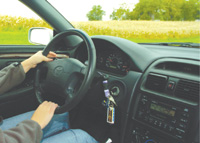Project Details
TR-792
10/13/21
02/28/24
Iowa Department of Transportation
Iowa Highway Research Board
University of Iowa
Researchers
Larry Weber
Ibrahim Demir
ibrahim-demir@uiowa.edu email >Associate Professor, University of Iowa
About the research
The goal of this study is to complete a comprehensive evaluation of the flood reduction benefits of existing on-road structures (ORS). This work will be performed in five selected HUC12s in Iowa. To accomplish this objective the research team will use the process-based hydrologic model GHOST to run multi-year continuous simulations using both historic precipitation conditions as well as increased precipitation conditions that represent the projected changes in heavy precipitation by the mid-and late-21st century.
Researchers
Linda Boyle
About the research
The goal of this study was to explore the effects of drivers? personal characteristics and the in-car and out-car conditions associated with a car crashes on the types of crashes that drivers are most likely to be involved in.
It was hypothesized that personal and environmental characteristics surrounding a car crash will affect the types of crashes the drivers get involved in. Also, it was hypothesized that some differences in crash type patterns exist among the four Midwestern states (Iowa, Kansas, Missouri, and Nebraska) and between the Midwest and the country as a whole. The results of this study confirmed that these differences do exist.
Another goal of this study was to analyze the effect of different types of driver distractions on the crash types drivers get involved in. The results of this analysis showed that different sources of distraction lead to different types of crashes.
Funding Sources:
Midwest Transportation Consortium
University of Iowa
